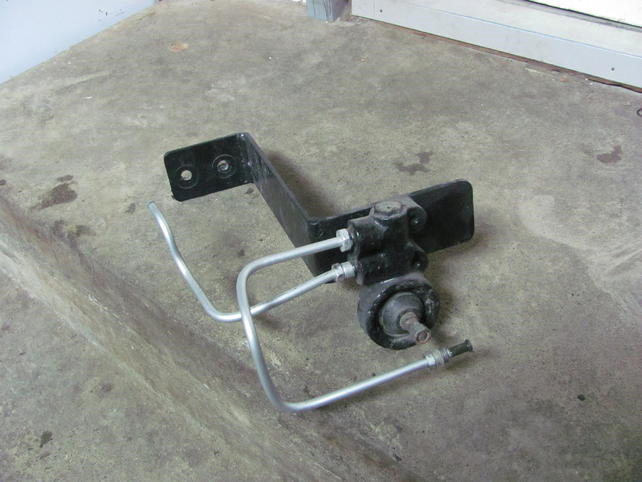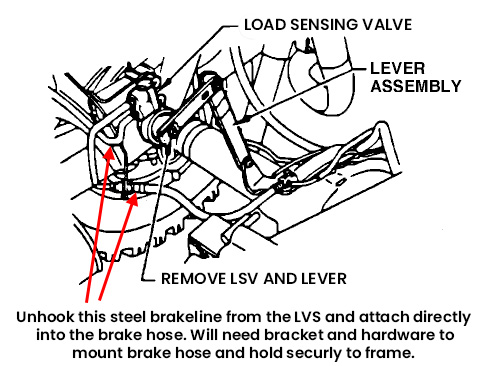Save $25 to $500 w/code! - details
Chevy / GMC Load Sensing Valve Removal
The rear load sensing valve was introduced between 1984 and 1990 on most GM 8600 GVWR and larger ¾-ton trucks, Suburban’s, and all 1-ton trucks. Typically, a vehicle relies on its front brakes for about 80% of its stopping power. If the rear brakes received the same pressure as the front brakes, it could result in rear wheel lock-up, especially during a sudden and forceful stop. This scenario is undesirable, as it may lead to complications such as fish-tailing or loss of control. When braking, the majority of the vehicle's weight shifts to the front wheels due to the laws of physics, necessitating enhanced stopping power in that area. However, when carrying a substantial load in the rear, this dynamic changes significantly. This is where the Load Sensing Valve (LSV) comes into play. The LSV features an arm attached to the rear axle housing, monitoring the axle's position relative to the frame. The movement of this arm enables the valve to regulate the flow of brake fluid to the rear brakes. It's important to note that modifications to your vehicle's ride height or spring rates can impact the LSV. Any adjustments, such as lifting or lowering the vehicle, necessitate a corresponding linear adjustment to the LSV. Introducing elements like additional leaf’s, air shocks, air bags, or overload devices further complicates matters. The LSV relies on factory spring rates to accurately adjust flow according to the load. Adding overload devices can significantly alter performance or even negate the purpose of the LSV, as it fails to sense the load and allows only minimal flow to the rear brakes. While specific tools are available to adjust the LSV to factory settings, modifying the suspension makes it challenging to achieve optimal adjustments. Consequently, the LSV is often removed from modified vehicles, causing maximum pressure to be directed to the rear brakes continuously. This, in turn, can lead to rear wheel lock-up during abrupt stops, resulting in potential issues such as fish-tailing or loss of control. Our recommendation is to remove the LSV and test the vehicle without a load to assess if there are any issues with rear brake lock-up. Numerous aftermarket adjustable proportioning valves are available for installation, offering easy adjustments for reduced or increased brake pressure on the rear. You will need to figure out a bracket to mount the brake hose on the frame after removing the LSV. It's worth noting that GM released a Technical Service Bulletin (TSB) advising the removal of the LSV on certain models. Copy of the TSB is below: 84-88 GM REAR LOAD SENSING VALVE TSB GMC NUMBER: 88-T-151 DATE: August, 1988 CORPORATE NUMBER: 865010R MODELS: 1984-86 C/K 3500 AND 1987-88 R/V 3500 THIS BULLETIN IS A REVISION OF TRUCK SERVICE BULLETIN 85-B-79, DATED MAY, 1985, UPDATING FOR MODEL YEARS 1984-1988. Parts listed below are currently available from GMSPO. 1. Detach rear brake hose from lever and bracket assembly. Reference Figure No. 1.
 Photo of factory load Sensing Valve (Without lever attached)  |
